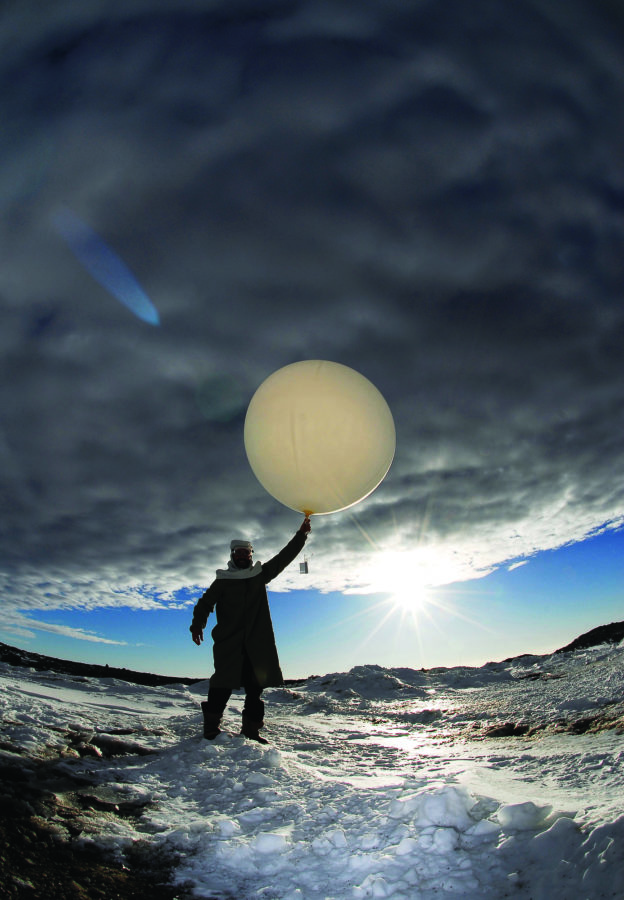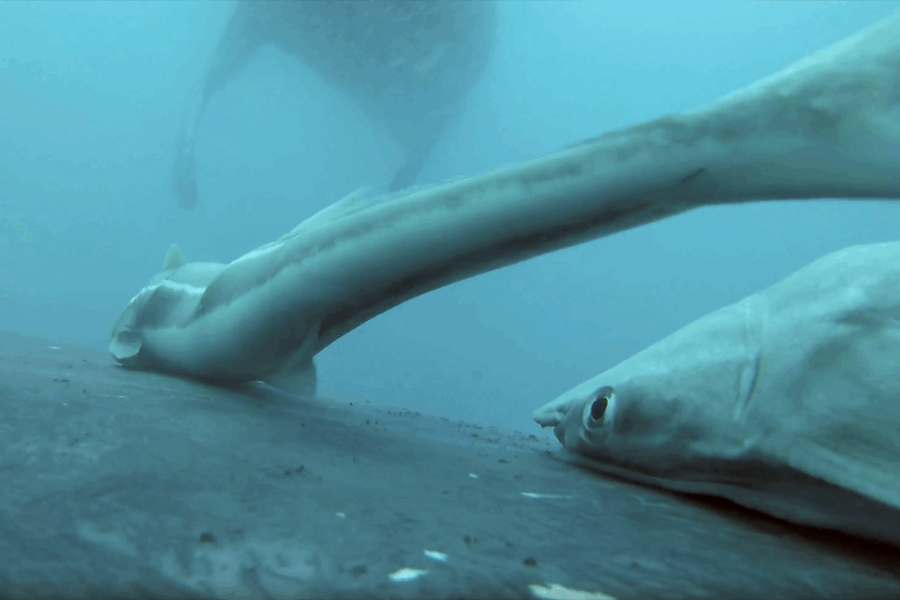Fixing the Hole in Our Sky

Just as it seems that humans have done irreversible damage to the planet’s atmosphere and set Earth on an inexorable path to a climate-based Armageddon, there’s a sign high in the sky over Antarctica that offers hope.
Kids during the last quarter of the 20th century grew up with the ozone hole looming large and ominously over their lives. When this potentially catastrophic ‘tear’ in the planet’s stratosphere, more than 10km above Antarctica, was discovered by scientists in 1985, it quickly set global alarm bells ringing.
Ozone is a gas that forms a kind of atmospheric blanket around the Earth to keep out much of the Sun’s UV radiation. Without it, life as we know it would never have evolved on this planet. The Antarctic hole quickly became recognised as the most extreme sign of a phenomenon scientists began finding evidence for worldwide during the 1980s: stratospheric ozone was being destroyed across the planet by human-produced gaseous chemicals, notably chlorofluorocarbons (CFCs), which were being used as propellants in aerosols and as highly effective refrigerants in refrigerators and air conditioners. It was feared that destruction of Earth’s ozone layer would mean we’d be bombarded during the 21st century by such high levels of cancer-causing UV radiation that life outdoors would be almost impossible for our species (as well, of course, for most other species on the planet).

Dr Paul Fraser, now a CSIRO honorary fellow, has been involved with the ozone crisis since it began. He was just embarking on his career in the 1970s as an atmospheric chemist when he was drawn to what was then still a scientific theory that CFCs could damage Earth’s stratosphere. He became pivotal in setting up Australia’s atmospheric CFC monitoring station at Cape Grim in Tasmania in 1976 and it was samples he collected there, at the Mawson research station in Antarctica, and elsewhere that helped, in the 1980s, to confirm global ozone depletion was occurring due to CFCs.
The governments of the world reacted swiftly and almost universally. In 1987 the first of an eventual 197 signed an agreement – the Montreal Protocol – to stop producing and using ozone-depleting substances (ODS), such as CFCs. There were some voices of dissent who questioned the science. But even for governments not convinced by what the research was showing, the outcome of doing nothing was so potentially diabolical it was seen as better to err on the side of caution and heed the most widespread expert advice. Notably, two of the world’s long-term conservative governments of the day who wielded much influence worldwide – those of Margaret Thatcher in the UK and Ronald Reagan in the USA – were both outspoken supporters of the Montreal Protocol and continued to be through various amendments that gradually extended its reach and led to faster phasing out of ODS.
“In the very early days the first significant step to reducing CFCs was banning their use in aerosols, and that industry quickly transferred to using non–ozone depleting propellants,” Paul says, explaining that the decision made by everyday people around the world to not use aerosols powered by CFCs rapidly helped reduce emissions.
Overall, however, the actions of the Montreal Protocol took time to kick in. Through the 1990s ODS continued to increase in the atmosphere, and the Antarctic hole – which appears over the continent in early spring each year due to extreme winter stratospheric conditions there that accelerate the chemical reactions that destroy ozone – kept growing.
But the rise in stratospheric ODS eventually peaked in the late 1990s and has since been falling. Every four years, a report is issued by the UN about the status of the ozone hole and ozone depletion science.
The recovery began around 2000, says Australian scientist Dr Matt Tully, who’s been working on the planet’s ozone issue for 15 years and has contributed to worldwide scientific assessments of ozone depletion since 2009. He’s responsible for the ongoing ozone program at the Australian Bureau of Meteorology (BOM) and is a member of the International Ozone Commission.
The healing of the ozone hole has been a slow trend, he says, and there is a lot of variation in its status from year to year, depending on conditions over Antarctica. But in the most recent assessment, released last year, scientists finally confirmed that long-term recovery of the hole is underway. “The assessments before weren’t prepared to call it,” Matt says. “There was too much variation from year to year, but in 2018 for the first time the assessment declared there were signs of recovery in the Antarctic ozone hole.” And last year, he adds, had the smallest ozone hole in more than 20 years, although due to its fluctuating nature it may open wider again while still continuing on its overall downward trajectory. Measurements taken by scientists with the BOM, CSIRO and Australian Antarctic Division (AAD) are crucial in compiling these four-yearly assessments and also in keeping watch that all countries maintain their obligations, under the Montreal Protocol, not to use CFCs.

These days Cape Grim is one of only three premier baseline air pollution stations in the world – the others are in Hawaii and the Canadian Arctic. In 2018–19 monitoring by this network documented and located a rogue producer of CFCs in China, flouting the terms of the Montreal Protocol. They were dealt with swiftly and shut down.
While the Montreal Protocol is widely regarded as the most successful environmental treaty ever, Paul warns that the world still has a way to go in reducing global levels of ODS. “We’ve only just gone through the worst part of it,” he says. It’s expected that it won’t be until the 2060s that levels of ODS in the stratosphere will be brought back to pre-1970s levels.
In the meantime, there are still impacts caused by the problem that are only just beginning to emerge. The AAD has been collecting ozone data in Antarctica on a weekly basis now for two decades. “The measurements themselves are very important in helping to give information on the amount of ozone in the stratosphere,” says AAD atmospheric scientist Dr Andrew Klekociuk. “But AAD researchers are also tracking the impact on Antarctic ecosystems of the ozone hole, and the higher levels of UV radiation that it allows in. We know from AAD research, for example, that krill are influenced by elevated UV, and go down deeper to cope in the water column.” While there is still much work to be done on evaluating the impact of this, these tiny crustaceans drive food webs in Antarctica and beyond so the impacts are potentially enormous.
Although there are significant differences between how and what causes rising emissions of ODS and greenhouse gases, it’s widely thought that the success of the Protocol offers hope for global warming and provides lessons in how that can also be brought under control.
Leader of CSIRO’s Earth Systems and Climate Change Hub Professor David Karoly, has worked across research into the consequences of both elevated emissions of greenhouse gases and ODS. He says three key things made the Montreal Protocol work. First, it took a top-down approach, with the governments of all countries agreeing unilaterally to restrict their emissions.
“Second the companies that were making and selling ODS realised they could also make and sell the replacement chemicals,” David continues. “So they were potentially going to make more money because they had new patents for the replacements.
“And third, the industry-led ‘merchants of doubt’ about the links between stratospheric ozone depletion and the ODS weren’t as successful [as they are being in regard to climate change] because the companies didn’t support them when they realised they could make money with replacement chemicals.”
This article was originally published in Issue 154 of Australian Geographic.




